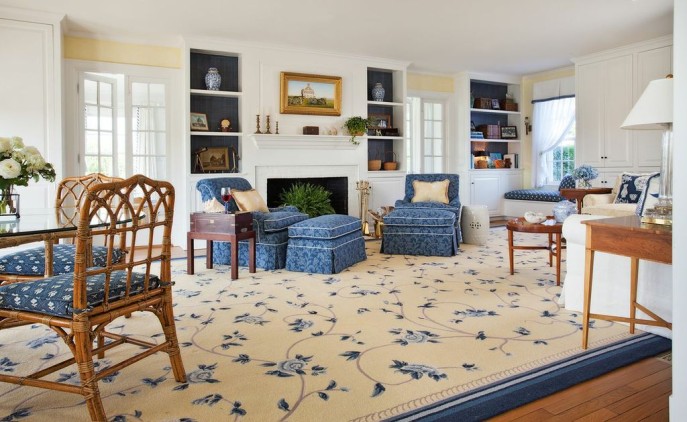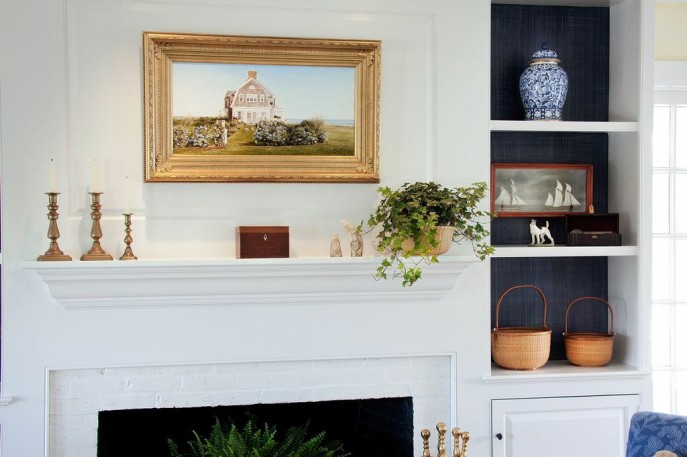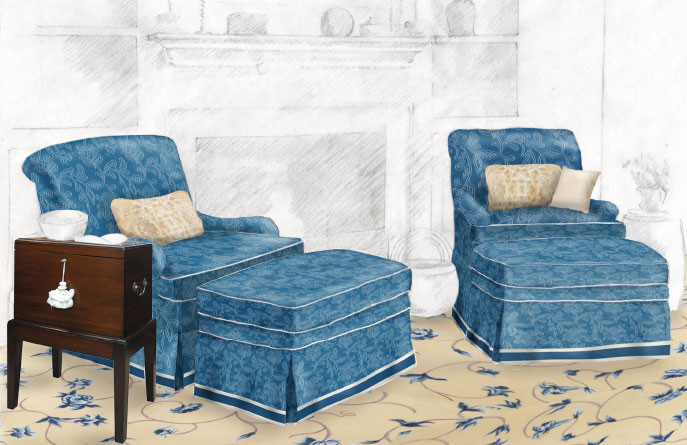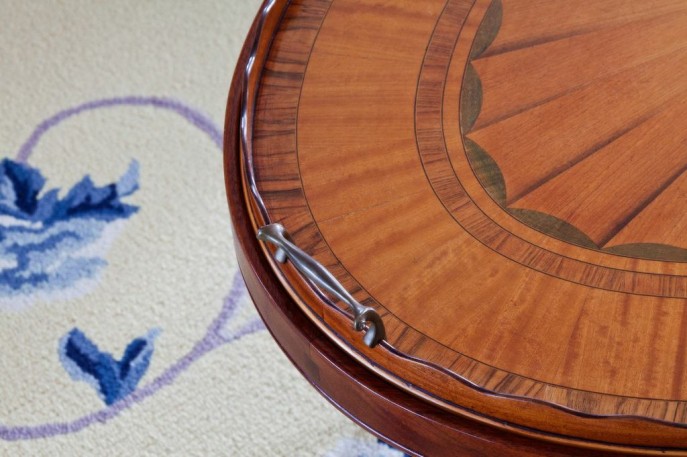
Have you ever walked into a room and wondered where to begin? Interior designers face this question all the time. There’s always a starting point, a moment of inspiration. It may be the window with the stunning view and the way the sunlight slants into the room, or a family heirloom or painting that helps define colors and style.

In this case, the entire house we’d first designed and completed in 1995 was picked up and moved across Nantucket Island. Erosion on Sconset Bluff had caused the home to be moved from its precarious position first in 2008, and again only a few years later.

When the house was carefully set down again in its new location facing Nantucket Harbor, it was time to take a new look at the Edwardian-era home. The owners still loved what we created almost 20 years earlier, but wanted an updated version, while still retaining their favorite pieces from the original design. As part of the design process, my team and I began with detailed scaled drawings that showed our concept of the space.

In the living room, the owners loved the custom rug in their favorite colors, with a floral pattern reminiscent of their beloved gardens. The decision to keep the rug I designed in 1994 set the stage for everything that followed. Besides the “green” ideal of re-using existing pieces, it is so rewarding when a client loves what you created so much that they want to keep the feel of the original design from years ago.

Renderings are particularly helpful with long-distance clients. A board was sent to the owners detailing the fabrics, the carpet runners and the faux paint wall treatments. The colors were updated. Celestial blue and white blended with soft touches of buttery yellow would make the home as inviting as a summer sky. The designs, though traditional, were clean lined and reflected the simpler tastes of the 21st century.

Fabrics for the living room were sent for approval, along with the design for window treatment. An up-to-date tailored valance with panels replaced the floral English country house look. Both panels and valance were accented with a custom trim we created from a striped fabric.

We also retained most of the original furnishings, which were reupholstered with new fabrics. The chairs were redone in indoor/outdoor fabric, with cording and tape trim for a touch of detail.

Options for additional pieces of furniture were proposed for the living room. From the pieces submitted, the clients chose two conversation groups and a game table area to be placed by the windows.

An artist created the unique wall treatment, with stenciled shells accenting important architectural features. The shell pattern related the home to the harbor and the sea beyond. The Blue Willow patterned fabric on the sofa pillows recalled Nantucket history and the days when sea captains brought back gifts of Chinese Export porcelain.

In just ten months, we managed a comprehensive house redesign, incorporating favorite pieces from the original home and seamlessly blending them into a sophisticated, 21st century style for an expanding family of parents, grown children, new in-laws, and grandchildren. From a two- to three-month planning and selection phase to a six- to seven-month ordering and implementation phase, we completely redesigned a house with four floors and seven bedrooms.

It was an amazing amount of work in a short time frame, but the clients were happy with every single detail of their new home, and so were we.





